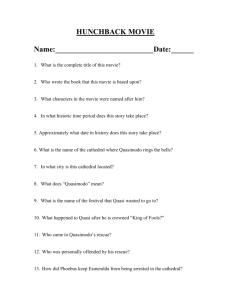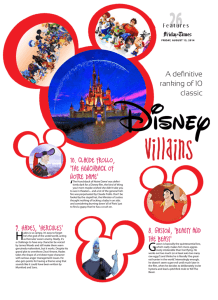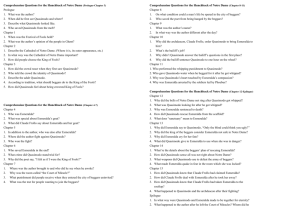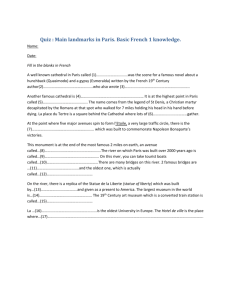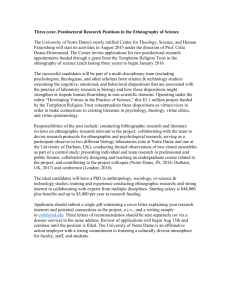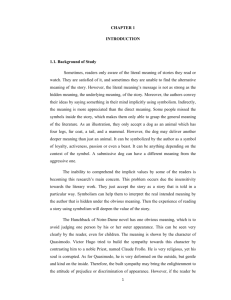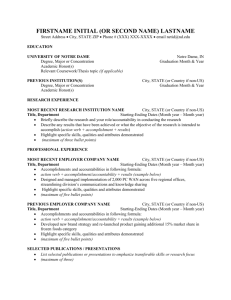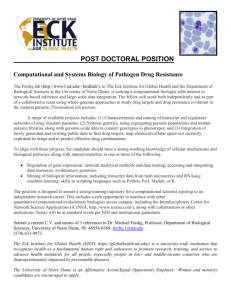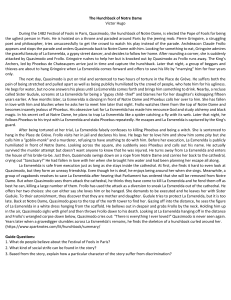Hunchback of Notre Dame storyboard exemplar
advertisement
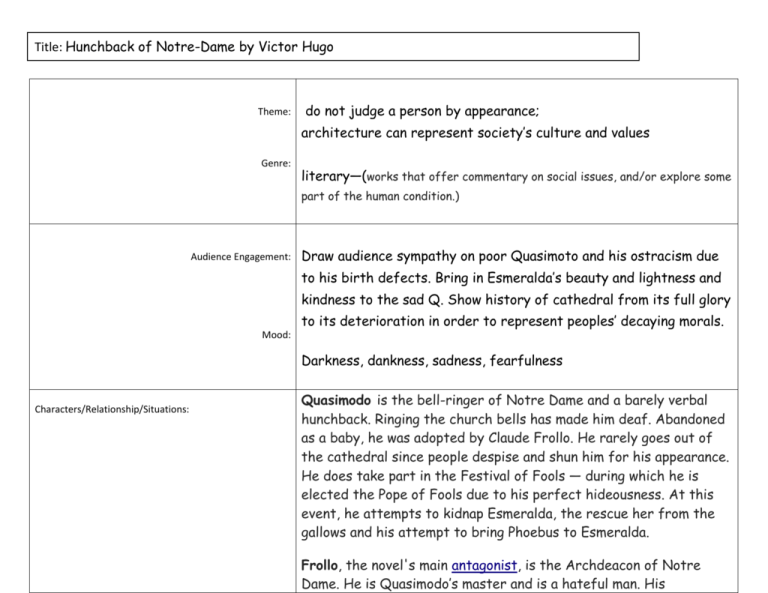
Title: Hunchback of Notre-Dame by Victor Hugo Theme: do not judge a person by appearance; architecture can represent society’s culture and values Genre: literary—(works that offer commentary on social issues, and/or explore some part of the human condition.) Audience Engagement: Draw audience sympathy on poor Quasimoto and his ostracism due to his birth defects. Bring in Esmeralda’s beauty and lightness and kindness to the sad Q. Show history of cathedral from its full glory to its deterioration in order to represent peoples’ decaying morals. Mood: Darkness, dankness, sadness, fearfulness Characters/Relationship/Situations: Quasimodo is the bell-ringer of Notre Dame and a barely verbal hunchback. Ringing the church bells has made him deaf. Abandoned as a baby, he was adopted by Claude Frollo. He rarely goes out of the cathedral since people despise and shun him for his appearance. He does take part in the Festival of Fools — during which he is elected the Pope of Fools due to his perfect hideousness. At this event, he attempts to kidnap Esmeralda, the rescue her from the gallows and his attempt to bring Phoebus to Esmeralda. Frollo, the novel's main antagonist, is the Archdeacon of Notre Dame. He is Quasimodo’s master and is a hateful man. His attraction to Esmeralda sets off a chain of events, including her attempted abduction and Frollo almost murdering Phoebus in a jealous rage, leading to Esmeralda's execution. Esmeralda is a beautiful young gypsy street dancer who is naturally compassionate and kind. She is the center of the human drama within the story. She is loved by both Quasimodo and Claude Frollo, but falls deeply in love with Captain Phoebus, a handsome soldier who she believes will rightly protect her but who simply wants to seduce her. She is one of the few characters to show Quasimodo a moment of human kindness, as shown when she gives him water after the hunchback's flogging. Black Slide (a church bell rings three times) (Picture of Q rises up from darkness, while quietly menacing music rises.) Zoom into his face. It’s Paris in the middle ages and living at the Cathedral of Notre Dame are MONSTERS. Stone monsters. Along with Quasimoto, a human born with deformities so severe, Parisians fear him as a monster. And fear breeds cruelty. He is often jeered and whipped and mistreated. And released back into the darkness of the bell tower of Notre Dame. (a lonely chuch bell tolls)
